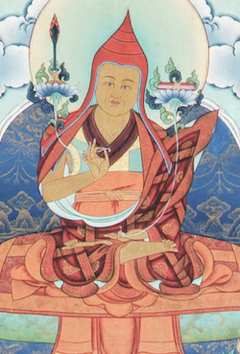Dodrupchen Jigme Tenpe Nyima Series
English (44) | Deutsch (6) | Español (7) | Français (22) | Italiano (1) | Português (10) | 中文 (8) | བོད་ཡིག (44)
Texts by and about the Third Dodrupchen, Jigme Tenpe Nyima (rdo grub chen 'jigs med bstan pa'i nyi ma, 1865–1926):
Advice
Aspiration Prayers
Commentaries
Dedicatory Colophon Verses
Dzogchen
Explanations
Fulfilment
Guru Yoga
Lineage Prayers
by
Jigme Lingpa
